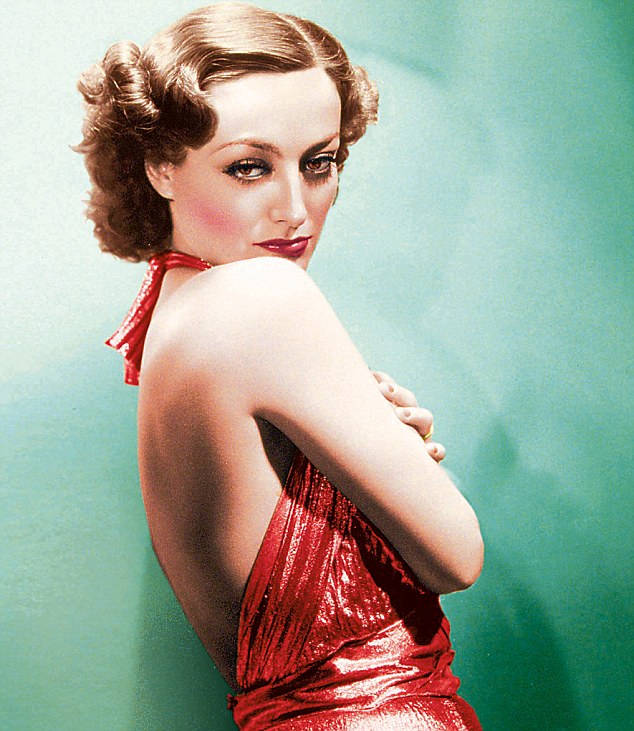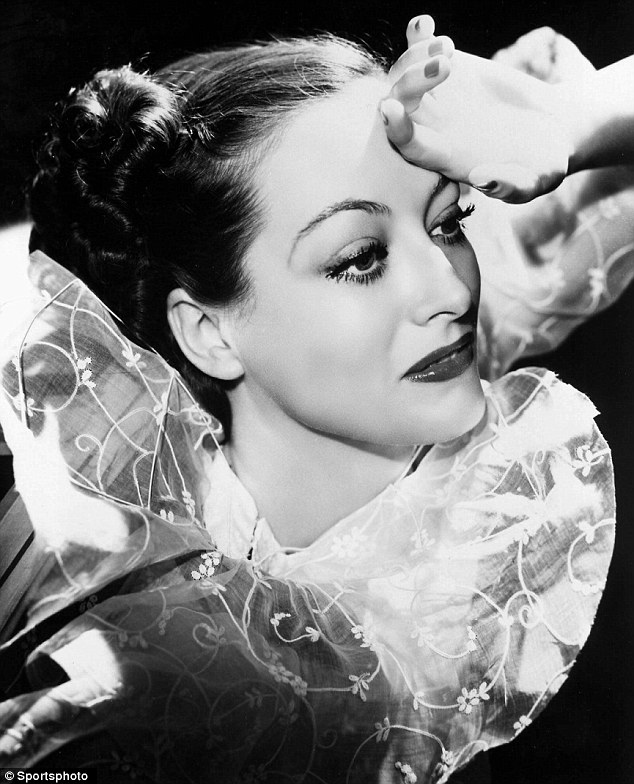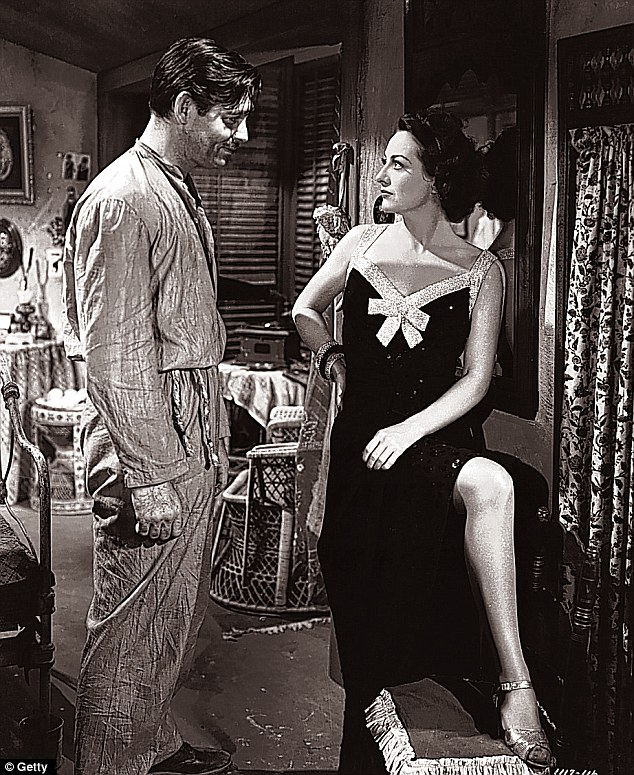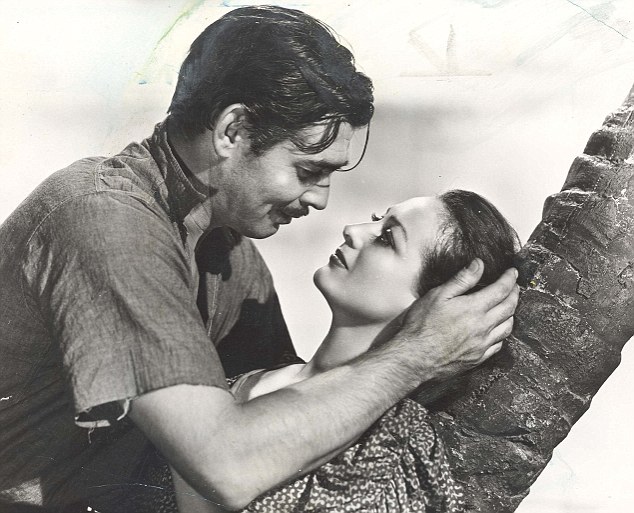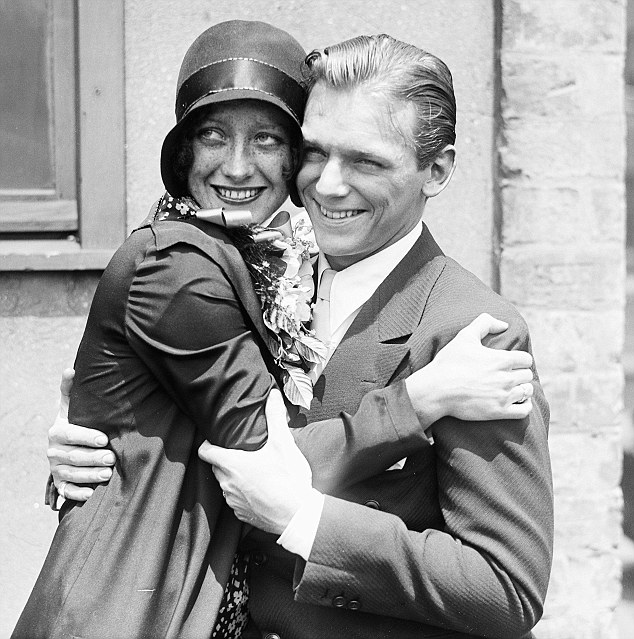A new article and some photos!Even though it's the daily mail, I do love it when blogs and online papers do articles on old Hollywood stars.
How Joan Crawford ruthlessly used her body to control co-stars, directors, and anyone who could advance her career
By
Donald Spoto
Last updated at 8:39 AM on 11th February 2011
Rumours of Joan Crawford’s freewheeling sex life had circulated Hollywood for many years.
Even so, director Vincent Sherman was taken off guard when in 1949, as part of preparations for a movie called The Damned Don’t Cry, she invited him to a studio screening room to watch some of her previous work.
The fact that Sherman was married with two young children meant little to Crawford, then not long divorced from her third husband, a long-*forgotten actor named Phillip Terry.
Seductress: Joan Crawford was spotted by talent scouts and moved to Hollywood where her career took off
As the two sat in the dark, she removed her clothes and initiated an afternoon of wild passion.
‘Never had I encountered such female boldness,’ recalled Sherman many years later. ‘I was *confronted with a woman who went after what she wanted with a masculine approach to sex.’
When he later confessed to his wife Hedda, she was philosophical.
‘Well,’ she replied. ‘I guess it’s too much to ask of any man that he turn down the opportunity to sleep with Joan Crawford.’
Few men ever did turn down that opportunity with the star of such classics as Mildred Pierce, The Women and Grand Hotel, as the siren conducted relationships with many of her directors and leading men.
As we will see, these ranged from a disastrous liaison with Spencer Tracy to a deep bond with Clark Gable which lasted more than 30 years.
Although she was undoubtedly an exceedingly *sensual woman, with no inhibitions, there was a darker reason for this seduction of her male *colleagues.
‘She was trying to take control of me and the film,’ recalled actor-director Vincent Sherman, one of many who suspected Crawford of turning her sexual wiles to professional advantage.
If by doing so she could persuade directors to favour her with more close-ups shots, and render her male co-stars less likely to upstage her, *Crawford saw this as all to the good.
After all, her life-long project was to maintain her image as Joan Crawford the movie star, an ambition given unstoppable momentum by the *misery of her childhood.
Lonely: Despite her success, the actress says she always felt an 'outsider', never fully accepted
Her father deserted the family home shortly after Crawford was born in San Antonio, Texas, in 1906. As a child, Crawford (then called Lucille LeSueur) was treated as a skivvy by her laundress mother, fondled by one of her stepfathers, and frequently beaten. She never forgot her feelings of loneliness and isolation.
‘I never had any close chums,’ she recalled. ‘I was “different” because my mother wasn’t a very good seamstress, so my dresses were always too long or too short. I yearned to be famous, just to make the kids who had laughed at me feel foolish.’
As she blossomed into a beautiful teenager, with flame-red hair, expressive blue eyes and shapely legs, she soon attracted a different kind of attention.
'I was always an outsider,’ said *Crawford. ‘I was never good enough. Not for the Fairbanks tribe. Not for Louis B Mayer, not for so-called film society.’
Dancing in a Chicago strip club at the age of 17, she later joined the chorus of a Broadway show in which she was spotted by talent scouts from Louis B Mayer’s MGM.
By 1929, just four years after her arrival in Hollywood, her position in its dazzling firmament seemed assured.
As Joan Crawford, a name chosen by fans in a studio-sponsored contest, she was already one of MGM’s biggest stars and that year she *married Douglas Fairbanks Junior, son of Douglas Fairbanks Senior.
This elevated her to the highest *levels of Hollywood society, as *presided over by Fairbanks Senior and his second wife Mary Pickford at their mansion Pickfair.
But his first wife, Anna Beth Fairbanks, made it clear that the former Lucille LeSueur could never be fully accepted, dismissing her son’s latest relationship as ‘a chorus girl fling’.
‘I was always an outsider,’ said *Crawford. ‘I was never good enough. Not for the Fairbanks tribe. Not for Louis B Mayer, not for so-called film society.’
Longing to be regarded as a proper companion for her well-born husband, she emulated his every refinement, learning to dress with better taste, and toning down her hair colour from its natural bright red to a sedate chestnut brown.
But while she devoted herself to self-improvement, studying French and learning operatic arias in between working long hours at the studio, Fairbanks was sleeping with other women and she blamed herself for this.
‘I worked too hard, and a lot of my relationships failed because of that,’ she admitted. ‘I needn’t have spent so much time on the image thing.’
A glorious affair: Joan Crawford's relationship with Clark Gable was long standing.
Working relationship: The pair made eight films together and were on off lovers
Her determination to save the marriage *faltered in November 1931 when she and Clark Gable worked together on the melodrama Possessed.
Only that summer Gable had married his second wife, a Texan oil heiress, but he and Crawford began what she described as ‘a glorious affair’.
As rumours about this spread in Hollywood, Louis B Mayer feared that news of a romance between these two married stars would jeopardise both their careers.
To separate them, he paid for Crawford and Fairbanks to go on a delayed honeymoon to Europe the following June, but there was no hope for the marriage.
‘I am sorry to say that I crept out of our suite at night to visit another lady traveller,’ Fairbanks later admitted of their time at sea.
Crawford admitted in one of her last interviews that she should never have had children. ‘We actresses wanted to be mothers, but it was a lousy idea. The biggest part of us wanted the career.’
With Crawford continuing to see Gable on their return to America, she and Fairbanks eventually divorced in 1934. Although Crawford was keen to find a new husband worthy of her movie star status, Gable was never a contender.
They would work together on eight films in all and were, from time to time, lovers again. Yet their relationship was more often a loyal but *non-carnal friendship lasting until his death in 1960.
Within a year of her divorce from Fairbanks, the uneducated and always insecure Crawford had found another husband to play Professor Higgins to her Eliza Doolittle.
One year her senior, actor Franchot Tone would never achieve lasting success in Hollywood, but he was the son of a wealthy businessman and Crawford found his poise and sophistication irresistible.
He read her Shakespeare, Ibsen and Shaw and, after their marriage in 1935, encouraged her to hold formal dinner parties with the correct wines for every course and harpists providing the background music.
Dazzled by this new Svengali, Crawford failed to realise that he was a *violent alcoholic and soon he was beating her up and cheating on her.
‘One afternoon I dropped by his dressing room to surprise him — and I did,’ she recalled.
True to form, she was unfaithful too, sleeping with Spencer Tracy during the making of the movie Mannequin in 1937.
If she hoped this might make her heavy-drinking co-star more *pliable during filming, she was to be disappointed. ‘We whooped it up off the set, but he turned out to be a real b*****d,’ she said. ‘He did cute things like stepping on my toes when we were doing a love scene — after he chewed on some garlic.’
No hope: Crawford's marriage to Douglas Fairbanks Junior failed after they both slept with other people
Crawford’s marriage to Franchot Tone ended in 1939. So far, her attempts to cast aside the dirt-poor Lucille LeSueur of her childhood had brought her only misery as Joan *Crawford the wife.
Soon they led to more trouble in her next incarnation, as Joan Crawford the mother.
By 1947 she had adopted four *children: Christina, Christopher and twins Cathy and Cindy.
According to the unscrupulous *brokers who persuaded their mothers to give them up, and then sold them on for a commission, these babies were abandoned and unwanted.
If she believed this then Crawford was perhaps making an unconscious attempt to save those she saw as mirrors of her childhood self.
Whatever her motivation, she appeared determined to give them the father figure she never had, resulting in a third disastrous *marriage in the summer of 1942.
The groom this time was Phillip Terry, a 33-year-old bit-part player from San Francisco who was tall, good-looking and, most importantly, fond of children.
When they divorced only four years later, the large settlement awarded to Terry almost destroyed her financially. But she never lived to see the most notorious consequence of her foray into motherhood.
This was the publication in 1978 of Christina Crawford’s autobiography Mommie Dearest which depicted her mother as a monstrously *abusive and alcoholic tyrant.
We will never know what Crawford would have made of this, but she admitted in one of her last interviews that she should never have had children. ‘We actresses wanted to be mothers, but it was a lousy idea,’ she said. ‘The biggest part of us wanted the career, and we had to live up to the demands of that career.’
more at the daily mail. com
here is the link
http://www.dailymail.co.uk/femail/a...awford-used-body-control-stars-directors.html






















